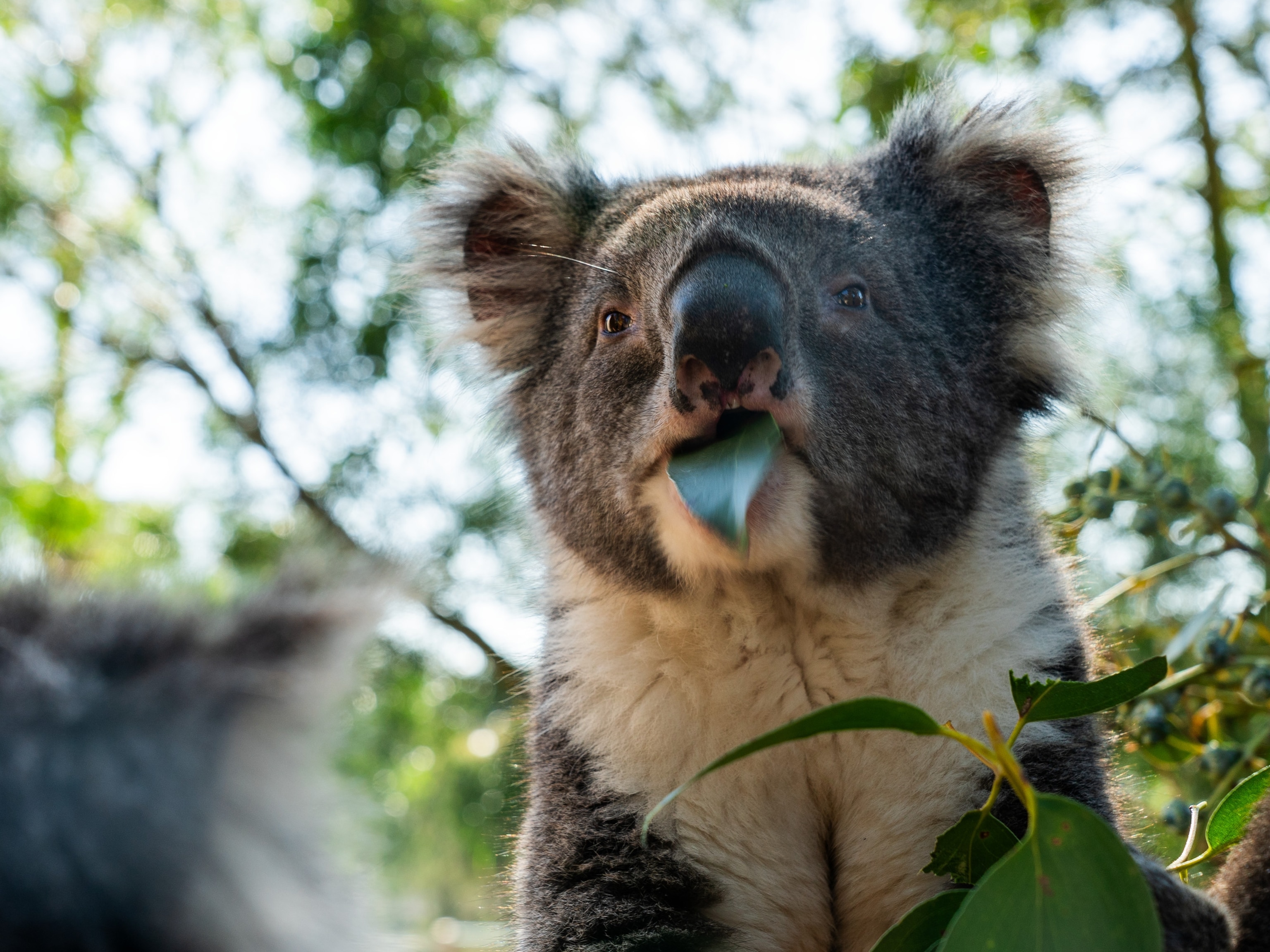In early 2016, zookeepers at Healesville Sanctuary in Victoria, Australia, introduced a female Goodfellow's tree kangaroo named Mani to a male of the same species named Bagam with one urgent objective: to swell the ranks of the endangered species. Some two years later, their hopes were realized when a routine check of Mani’s pouch found a newborn joey the size of a jelly bean.
Before poking its head out for the first time in early September, the joey spent about six months nursing and growing in Mani’s pouch. During that time, the conservationists of Zoos Victoria were championing tree kangaroos on a whole other front—by helping coffee farmers find profit in protecting the species’ habitat.
The arrival of the joey, which is still unnamed, was a cause for rejoicing. It’s the first successful birth at Healesville Sanctuary of the Goodfellow’s tree kangaroo, one of the rarest among more than a dozen species of the animal found in parts of Papua New Guinea, Indonesia, and Australia. The sanctuary and two zoos make up the Zoos Victoria organization, which works with like groups around the globe to ward off extinctions in the wild and also sustain species in captivity through breeding programs.
Goodfellow’s tree kangaroos have shorter legs and stronger forelimbs than their ground-hopping wallaby and kangaroo cousins. This anatomical trait gives them agility in the treetops but also makes them a bit clumsier than their cousins when they’re on the ground. So being killed by hunters is one of the main threats they face in the wild, says Chris Banks, manager of conservation partnerships at Zoos Victoria. (See a baby kangaroo rescued from dead mother’s pouch)
A Caffeinated Conservation Strategy
The animals also are endangered by the loss of tropical forest habitat, Banks says. Zoos Victoria has partnered with the Tree Kangaroo Conservation Program to help fight the loss of the animals in Papua New Guinea, using a strategy designed to help community members as well as wildlife. The program centers on a popular locally-grown beverage: coffee.
More than 90 percent of the land in the area is owned by the indigenous people. If they can thrive, Banks says, “more coffee farmers means more protected land and increased protection for populations of tree kangaroos, cassowaries, cuscus (a possum-like marsupial), and many other species.” That’s the inspiration behind the Conservation Coffee Project, which helps locals implement agriculture methods that preserve both wildlife habitat and the farmers’ livelihood. “By generating a sustainable income for families,” Banks says, the project also contributes to “increasing their food security and access to health and education services.”
The project so far has resulted in more than 180,000 hectares of habitat being protected, and the establishment of a Conservation Coffee Cooperative with more than 600 farmers as members. Since 2011, Banks says, the effort has exported almost 90 tons of coffee beans—a product that’s on retail shelves at Zoos Victoria parks.
The young tree kangaroo will not be reintroduced to the wild. “The best way to secure a future for this species at present is to take pressure off the wild population,” Banks says.






















